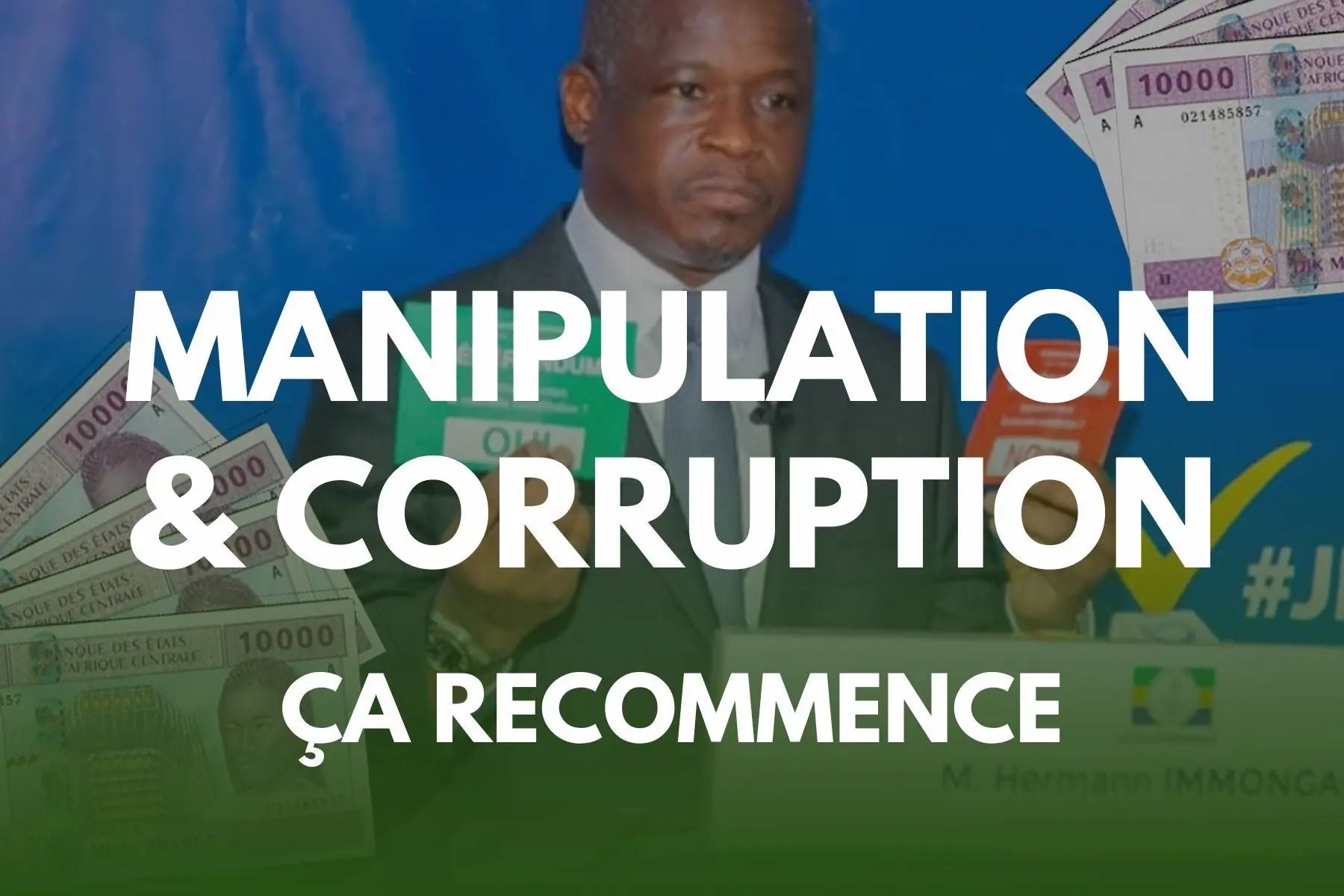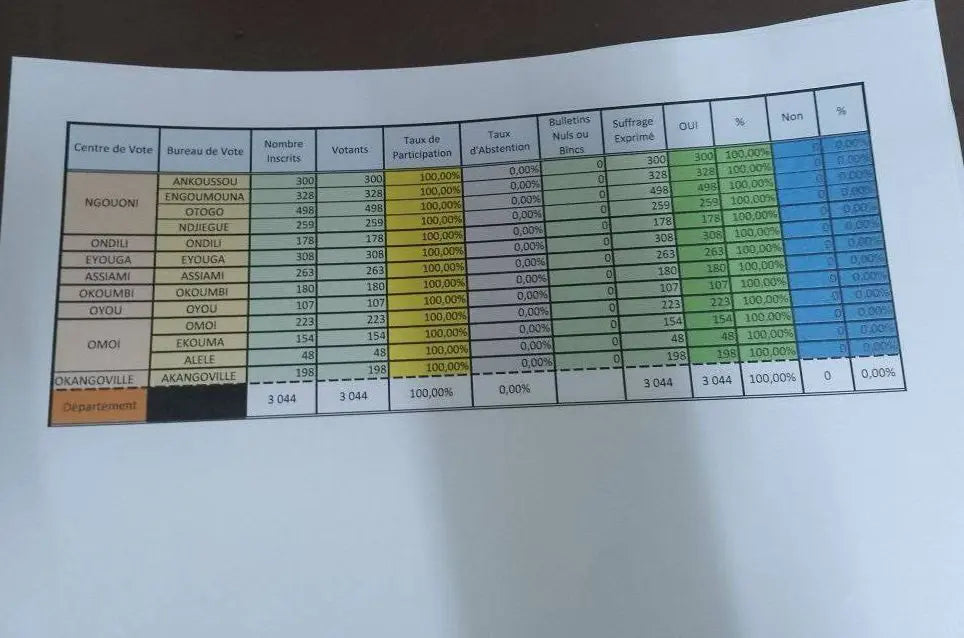
Referendum in Gabon: a day of voting between corruption and manipulation
A referendum in Gabon where the "yes" is adorned with green and notes, while the "no" is drowned in red.
Today, Gabon is experiencing a moment that is supposed to mark its political transition: the constitutional referendum. If on paper this democratic exercise seems noble, in reality, the strings are pulled with a skill that borders on the art of sleight of hand.
Between envelopes of thousands of CFA francs discreetly distributed in the pockets of voters, and colors skillfully chosen to influence the collective unconscious, everything seems to be done so that the "yes" triumphs without a doubt. A lesson in democracy or manipulation? Rather the second option, according to two flagrant examples of stratagems that are the subject of debate.
Vote “yes” against “per diems”: corruption assumed
After the #chatter justifying the yes.. the #sharing of #perdiems for the #referendum #Woleu #CantonNye #WoleuNtem #Gabon pic.twitter.com/hwYJdQixS1
— MPAGM (@Mpagm2014) November 16, 2024
Social media is ablaze: a widely shared video shows voters receiving hard cash after attending a rally in favor of the "yes" vote. Coyly called "per diems", these envelopes are in reality an electoral bribe. The scheme is simple: convince with promises of a bright future, then consolidate this "conviction" with an immediate monetary gesture. Twitter is flooded with testimonies corroborating this practice.
The technique, however immoral, is not new in the arsenal of electoral strategies on the continent. However, its omnipresence during this Gabonese referendum demonstrates one thing: the "yes" camp will stop at nothing to ensure a favorable vote. Because, beyond the fiery speeches, money remains a powerful lever in a country where social inequalities are glaring.
Yes in green, no in red: we have seen more subtle manipulations...
Another element of manipulation, less direct but just as effective: the choice of colors of the ballot papers. The "yes" is displayed in green, a color associated with positivity, hope, nature and the future. On the other side, the "no" is adorned with an aggressive red, a symbol of danger, prohibition and sometimes even anger or violence. You don't have to be a professional psychologist to understand the impact of this dichotomy on voters.
It's like asking: "Do you choose the light of green or the abyss of red?" By playing on the unconscious codes of colors, the initiators of this stratagem ensure that even the undecided will lean towards the "yes". A manipulation which, although subtle, speaks volumes about the true intentions behind this referendum.


